Education
Teachers: Leading In Crisis, Reimagining The Future
Teachers: Leading in crisis, reimagining the future – is the theme of World Teachers’ Day 2020, held every year on October 5 since 1994. Let’s discover how our educators have led us so far and what we can do to support their mission.
Published
4 years agoon

Teachers: Leading in crisis, reimagining the future – is the theme of World Teachers’ Day 2020, held every year on October 5 since 1994. The day commemorates the anniversary of the adoption of the 1966 ILO/UNESCO Recommendation concerning the Status of Teachers. This Recommendation sets benchmarks regarding the rights and responsibilities of teachers and standards for their initial preparation and further education, recruitment, employment, and teaching and learning conditions.
The current crisis that we’re witnessing is the COVID-19 pandemic which has massively affected every sector. From the economy to education, nothing is spared from exiting their daily operations. In a recent survey conducted by the Melbourne Graduate School of Education at the University of Melbourne, the experts explored the impact of COVID-19 on teaching and learning. The study, led by Dr Natasha Ziebell from the Melbourne Graduate School of Education, received more than 1200 responses from teachers to understand how the rapid shift to online and distance learning has affected them.

Focusing on aspects like the challenges faced by the mentors and learners, teachers’ views on educational progress and social development, emotional impact due to isolation, the progress of students during online classes, and the experience of primary and secondary teachers, they found many interesting details.
- About 66% of teachers reported working more hours than usual.
- Nearly half of the teachers reported working almost an entire extra day while working from home. This equals to 20 hours extra per week.
- Visible mental health and wellbeing problems during this period were experienced.
- 15% primary and secondary school teachers reported that their students always attended the online class, while 16% said the students were present only half the time.
- Most importantly, 37% of teachers said their students failed to produce the same standard of work before remote learning.
According to Dr Ziebell, even though educators had it tough, they successfully managed to shift to remote learning platforms by improving their ability to deal with technology, something they weren’t equipped with earlier. It was made possible by perseverance and support from the fellow staff members. (Ref: https://ieusa.org.au/examining-the-impact-of-covid-19/)
While juggling reading, planning assignments, taking online classes, evaluating homework, and everything in between, teachers have undergone a massive psychological change they weren’t cautioned about in the beginning. With new adjustments that messed up with their personal space, teachers have reported experiencing anxiety and a loss of interest in work.
We might have gotten ourselves ten years to fulfil the vision we’ve set for the Sustainable Development Goal 4 on education towards 2030 but before that, we need to assess at what cost we’re going to declare this achievement. Recognising teachers and their hard work is a noble act but reflecting upon the severity of the current situation while they strive to reach our common goal is a far-fetched dream at the moment. So while we appreciate them leading in the crisis, we also need to open our eyes and delve deeper into how they’re leading us during the crisis.

As Audrey Azoulay, Director-General, UNESCO, recently said, “We have seen their dedication during this unprecedented situation but we have also witnessed their insecurity and deprivation, since the daily work of teaching literacy, however essential it is, receives too little recognition.”
On the other hand, if we think about it, it was the COVID-19 outbreak that may have pushed us towards a common style of global learning that's powered by technology, something some of us are yet to call the future of the education sector.
Believe it or not, the digital transformation is here to stay and while it’s already begun to transform the expectation of the students and educators, we need to understand how it will affect our future in the long run. With so much competition in the ed-tech sector, manual methodologies that we don’t want to give up on, new assessment tools and different mindsets altogether, will we be able to reimagine a high-quality and equal learning experience in the future for all?
In Dr Ziebell words – “We saw many teachers get creative in delivering highly specialised lessons, to boosting their digital literacy, and increasing communication with parents and guardians about the needs of students. The switch to remote learning was rapid and the response from teachers and parents was remarkable, but what the teachers have identified are important considerations as the COVID-19 situation evolves and in the event that there is return to remote learning. It also exposed how vulnerable children can slip through the cracks of the system – particularly when some teachers reported students refusing to even turn on the camera and report for their classes.”
According to UNESCO’s recent figures, as of mid-April 2020, 1.5 billion children and youth were affected by school closures in 195 countries, from pre-primary to higher education.1.3 billion learners in 186 countries are still unable to attend school. Sadly, reimagining the future and designing a roadmap using technology as our main defence still looks like an exaggeration to many. Educators and guardians want to wait to get back to ‘normal,’ but does that mean we’re simply delaying our progress and widening the educational gap even more?
To visualise the SDG4 – “Ensure inclusive and equitable quality education and promote lifelong learning opportunities for all” – according to UNESCO, we need to equip educators who lack basic ICT tools in their homes.

In many places, teachers also found themselves unable to continue education because many households lacked the technology and connectivity to allow students to learn online. Globally, for instance, approximately 50% and 43% of learners, respectively, lack computers or the internet in the home. Teachers themselves are under significant strain and many lack a network and system of psychosocial support from education leaders and the greater community. In many cases, teachers often have the double duty of looking after their own children at home while trying to teach online and facilitate the continuance of education and learning. (UNESCO)
Right from their creativity to their individuality, everything is at stake in the teachers’ life. Until we find reliable solutions, we cannot expect our teachers to keep leading us and create a better future.
Interestingly, in Senegal, UNESCO and the Global Education Coalition members Microsoft and Huawei supported 82,000 teachers and 5,00,000 students to continue education. UNESCO is supporting training for 200 teachers to be ‘master trainers’ and Huawei is giving devices to improve their connectivity.
In Lebanon, UNESCO is supporting the production of communication and education resources targeting teachers and parents (brochures, videos and guides) and capacity building for the Ministry of Education in the fields of ICT and education benefitting 50 coordinators to date. 280 video lessons are being acquired for the online platform of the Ministry, which will reach 1,000 schools and 200,000 leaners throughout the country.
In Samoa, Vodafone is mobilizing US$7.5 million to offer free access to education data for 60,000 learners and teachers. Orange is providing free internet access to accredited learning platforms in Burkina Faso, Guinea, Mali, and the Democratic Republic of the Congo. Similar packages are forthcoming in Botswana, Cameroun, Côte d’Ivoire, Liberia and Madagascar, an initiative due to be extended to Egypt, Jordan, Morocco and Tunisia. (Source: https://en.unesco.org/news/unesco-showcases-education-responses-covid-19-crisis-general-assembly)
Closer home, we have got the Indian govt. that launched SWAYAM (Study Webs of Active Learning for Young Aspiring Minds), an integrated platform for online courses, using information and communication technology (ICT). It’s developed by the Ministry of Education and AICTE (All India Council for Technical Education) with the help of Microsoft and is equipped for facilitating 2,000 courses. The platform offers free access to everyone and hosts courses from class 9 till post-graduation.
In short, if we want to continue the education of our children during these unprecedented times and beyond, it’s wise to rely on online platforms today and tomorrow. Gone are the times when Facebook and WhatsApp were considered immoral online communities. Today, teachers, along with their students, have changed the ‘course’ and are utilising these media to get more innovative and intellectual.
Further, UNESCO suggests that the stakeholders and development partners should look into the recent crisis and see what they can do to better the current situation. This includes redefining the role of the teachers at classroom-level, school-level and community level. (source: https://en.unesco.org/sites/default/files/wtd-2020-concept-note-en.pdf)
Classroom-level leadership (Micro): This refers to both face-to-face and virtual classrooms. This leadership level considers the interaction of teachers with their learners where teachers’ authority and competence are central. The teacher makes decisions regarding teaching methods and pedagogical approaches, interpreting the curriculum, sequencing learning, facilitating learning, monitoring and assessing outcomes in specific subjects and other cross-curriculum learning outcomes, based on knowledge of students’ ability levels, talents and challenges. The teacher goes beyond adhering to narrow role definitions but leads the teaching-learning process by being innovative and making impactful decisions. Teachers’ leadership at this level also applies to their decisions about the selection of ICT tools, learning management systems and online learning platforms, OERs, social media, radio, or TV, to support the teaching-learning process and meet expected learning objectives, whether in distance learning situations or as part of a blended approach.

School-level leadership (Meso): Teacher leadership at school level represents additional responsibilities, such as performing administration and management tasks, serving on committees (e.g., improvement committee, patronage of clubs), and pedagogical experts. Teachers and others with responsibilities at this level lead on the identification and selection of virtual learning platforms, e-learning software, textbooks, and other teaching-learning materials to be used on a school- or district-wide basis. As pedagogical experts, headteachers and other classroom teachers are uniquely positioned to lead on articulation and implementation of distance learning preparation plans to enable continuity of education during times of crisis. Through these roles, teachers align professional goals with those of the school, share responsibilities for its success and contribute to shaping its culture. Senior and experienced teachers mentor or coach juniors and peers, participate in the local community of practice, and encourage students and colleagues to learn and do things differently, thus serving as catalysts of change, and confronting obstacles to achieve the school mission.
Community-level leadership (Macro): In addition to teachers’ leadership role to ensure internal coherence between curricular components (i.e., learning objectives, subject curriculum/syllabus, teaching methods, textbooks, assessment rubrics), they can also ensure external coherence between curriculum and societal needs. The notion of curriculum as a contract between society and education actors helps to ensure i) coherence between interdependent education sub-sectors; ii) consistency between different stages (early childhood to tertiary and lifelong learning), and iii) forms of education (general, TVET, non-formal, informal). This framework is important to define teachers’ leadership roles and the contribution they can make to achieve the community’s and society’s desired social, economic, and cultural aspirations. Teacher leadership at the community level is often demonstrated within district-level coordination structures that have been put in place for the purpose of school accountability efforts such as teacher appraisals, performance evaluations, and school inspections, as well as individual and whole school professional development opportunities and management of teacher career structures. During the COVID-19 crisis and school closures, community-level grassroots demonstrations of leadership can also emerge where teachers develop organic solutions to mitigate educational challenges confronting communities when classrooms and school-level arenas are compromised.
Conclusion: This World Teacher’s Day, let’s determine to protect our teachers and their right to teach, and guide them towards a better future while they're busy making their next class a productive and unforgettable experience. Presently, the solution is to empower them from the inside by providing moral support and appreciation and on the outside, loading them with digital weapons to combat distance/virtual classroom glitches.
You may like
-


Remembering Kargil Vijay Diwas: A Lesson in History, Sacrifice, and Peace for Our Children
-
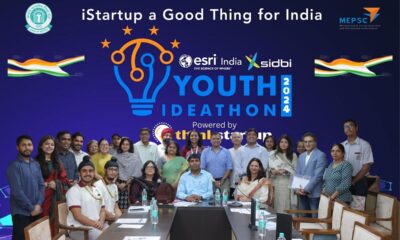

Youth Ideathon 2024: CBSE Launches India’s Biggest Entrepreneurship Competition for School Students
-
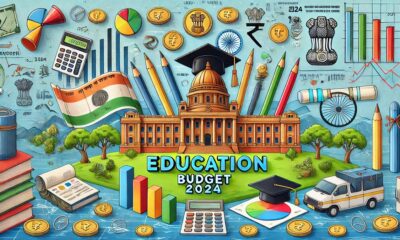

Internships in Top 500 Companies, Rs 5k Stipend for Youth: Key Highlights from the Education Budget 2024
-
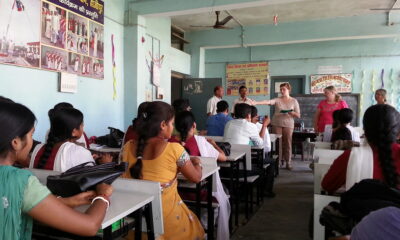

Higher Education Enrollment Jumps To Nearly 4.33 Crore In FY22, Up 26.5% From FY15
-
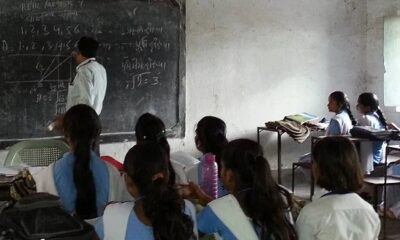

UNESCO Report Highlights Need for Boost in India’s Upper Secondary Education
-
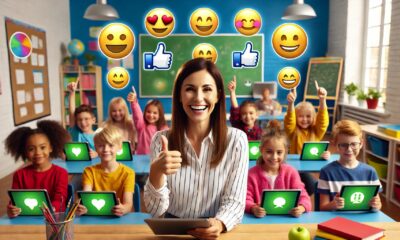

Embracing Emojis in the Classroom: A Fun and Polite Approach to Modern Learning
-
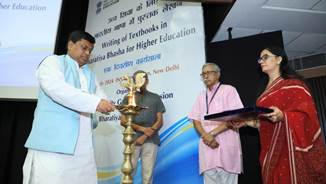

Workshop on Writing Textbooks in Bharatiya Bhasha for Higher Education Inaugurated by Dr. Sukanta Majumdar
-


Nurturing Natural Skills: Empowering Youth for the Future
-


Global Education Crisis Demands Immediate Action, Says UN Secretary-General
-


Celebrating Nikola Tesla: A Beacon for Transforming Education
Education
Youth Ideathon 2024: CBSE Launches India’s Biggest Entrepreneurship Competition for School Students
Published
2 days agoon
July 25, 2024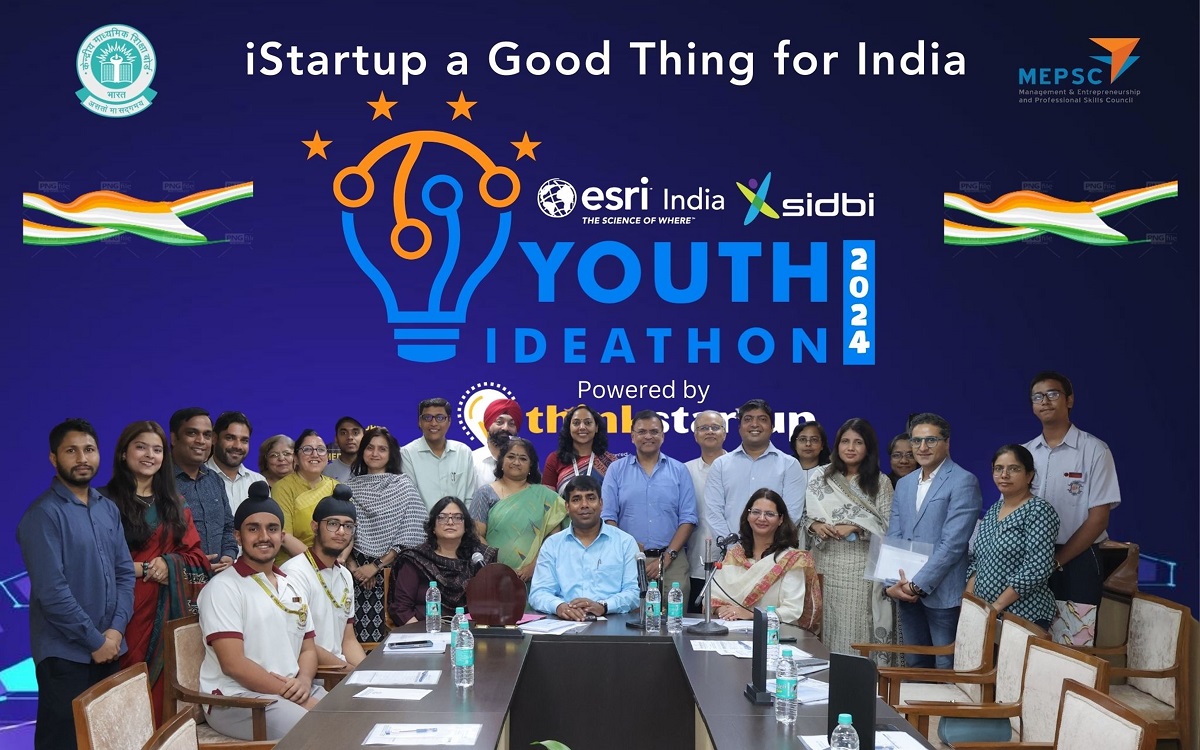
ThinkStartup, India’s leading entrepreneurship education platform, in association with the Management Entrepreneurship Professional Skills Council (MEPSC) under the Ministry of Skill Development and Entrepreneurship, and the Central Board for Secondary Education (CBSE), announced the launch of the 4th edition of Youth Ideathon (YI24). This prestigious Innovation and Entrepreneurship festival aims to harness the creativity and entrepreneurial spirit of young minds across India.
The theme for this year’s Youth Ideathon is “iStartup a Good Thing for India.” The competition will be held in five stages, initially online, and is open to all school students in India, divided into Junior (Class 4 to Class 8) and Senior (Class 9 to Class 12) categories. Students will compete in teams of 3 to 5 members from the same school. The grand finale is set for October 6, 2024. Last year, the Ideathon attracted over 1.5 lakh students from more than 8,000 schools, and this year aims to see participation from over 2 lakh students across 10,000 schools.
Dr Biswajit Saha, Director (Skill Education & Training), CBSE, remarked, “Entrepreneurship is an essential pillar of the New Education Policy 2020, and the Youth Ideathon platform allows students to think bravely and showcase their talents.”
Mamta Kumari, Deputy General Manager, SIDBI, added, “Initiatives like Youth Ideathon 2024 nurture the entrepreneurial spirit among young minds, creating over 200 internships for school students in fields such as technology and digital marketing.”
Shivani Singh-Kapoor, Co-founder of ThinkStartup, emphasised the importance of nurturing young talent, stating, “Youth Ideathon empowers the next generation by nurturing high-potential student ideas with incubation support.”
The competition is supported by industry leaders such as Esri India and MediaTek. Agendra Kumar, Managing Director of Esri India, noted, “Youth Ideathon channels the creativity of young minds towards addressing pressing social, environmental, and economic challenges.”
Anku Jain, Managing Director of MediaTek India, echoed this sentiment, saying, “By supporting platforms like Youth Ideathon, we aim to generate more startups, create jobs, and cultivate groundbreaking ideas.”
Sanjeeva Shivesh, Program Director of Youth Ideathon, highlighted the new frugal startup challenge, offering Rs. 1000 cash to the top 500 teams to build a prototype or small venture.
Youth Ideathon 2024 also receives support from SheAtWork and BRICS CCI WE. Ruby Sinha, Founder of SheAtWork, stated, “Youth Ideathon addresses both SDG 4 and SDG 5 goals of quality education and gender equality.”
Participants will receive certificates, with top teams competing for incubation grants up to Rs. 100,000. Special recognition will be given to teachers, mentors, and schools with high participation rates.
Education
Internships in Top 500 Companies, Rs 5k Stipend for Youth: Key Highlights from the Education Budget 2024
Published
3 days agoon
July 24, 2024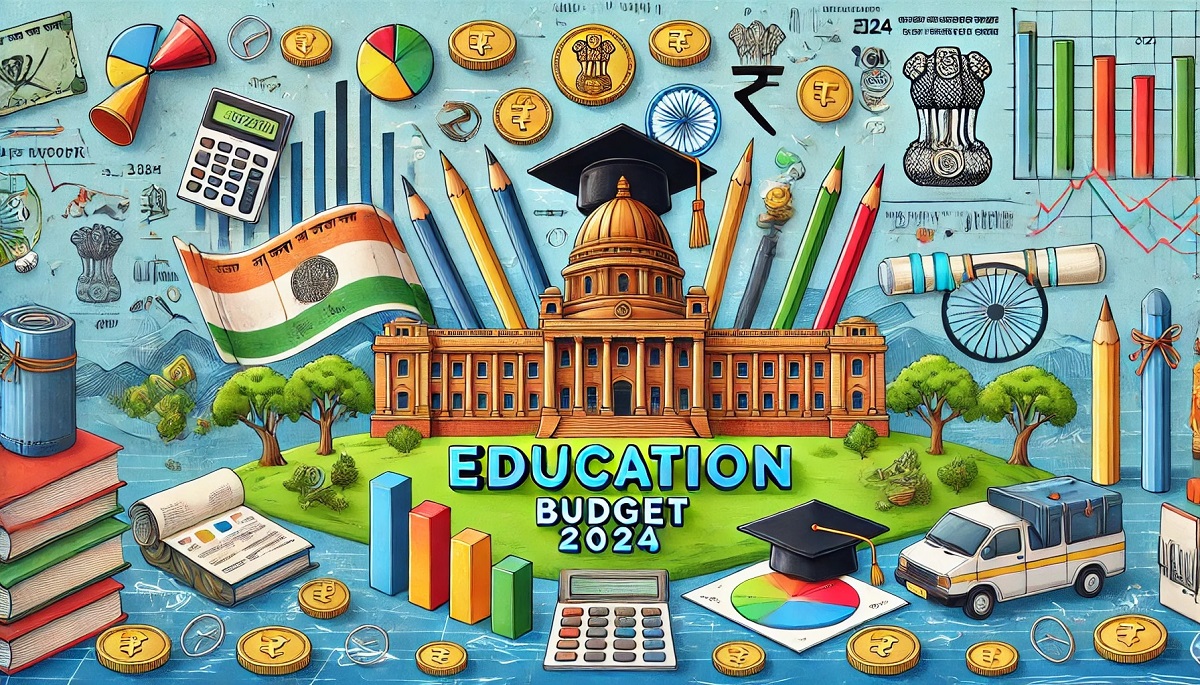
Finance Minister Nirmala Sitharaman presented the Budget 2024 yesterday, marking the first budget of the BJP-led NDA after Prime Minister Narendra Modi began his third term. The budget introduced significant allocations aimed at bolstering education, employment, and skilling, with a notable allocation of Rs 1.48 lakh crore for these sectors.
Education Budget 2024: Rs 1.48 Lakh Crore Allocated
A new scheme offering internship opportunities at 500 top companies for 1 crore students over the next five years was one of the major highlights. Each student will receive a monthly stipend of Rs 5,000 and a one-time assistance payment of Rs 6,000. This initiative is designed to bridge the gap between academia and industry, providing practical experience to young learners.
“The government’s initiative to provide financial support for higher education loans up to Rs 10 lakh is commendable. This move will enhance accessibility to quality education,” said Dilip Gangaramani, Founder Director & CEO of Target Publications Pvt. Ltd. “The allocation of Rs 2 lakh crore for employment and skilling initiatives is also a positive step towards addressing youth unemployment.”
Major Employment and Skilling Schemes
The Finance Minister announced a substantial PM Package consisting of five programmes aimed at boosting employment and skilling, with a total allocation of Rs 2 lakh crore. Among these, Rs 1.48 lakh crore has been specifically allocated for education, employment, and skilling. The initiatives will skill 20 lakh youth over a five-year period, significantly contributing to the nation’s workforce by equipping young individuals with necessary skills to thrive in various industries.
25,000 Students to Avail Loan Benefits Every Year
The budget also introduced model skill loans. “Skilling loans – model skill loans schemes for up to 7 lakh rupees will benefit 25,000 students every year,” stated Finance Minister Sitharaman. This initiative aims to support students financially in acquiring necessary skills, thus enhancing their employability and career prospects.
“This year’s budget strikes a fine balance between fiscal discipline and drivers of economic and social growth. Enhanced initiatives on women empowerment and education underscore the focus on welfare schemes,” noted Dr Rakesh K Singh, Professor and Associate Dean – Academics at IMT Ghaziabad. “Structural reforms propose new policies to foster innovation and skill development in emerging areas such as AI and renewable energy.”
Comparison with Previous Budget
In the Union Budget 2023, the central government’s allocation for the education sector was Rs 1,12,898.97 crore, the highest allocation granted to the Ministry of Education at the time. The Union Budget 2024 reflects a strong focus on education, employment, and skilling, with significant investments aimed at creating a more skilled and educated workforce. The announced programmes and allocations are expected to drive improvements in educational infrastructure, job creation, and skill development across the nation.
“The government will also offer internships in 500 of India’s top companies. The companies can employ these interns through their CSR funds. As a support to employers, reimbursement of up to Rs 3,000 per month for two years towards their EPFO contribution for each additional employee will be provided,” stated Balkishan Sharma, Chairman & Founder at FVEG. “These new schemes aim to create new jobs and provide employment to well-educated youth.”
A Step Towards a Skilled Workforce
“The proposed comprehensive internship programme for one crore youth is a commendable initiative,” added Gangaramani. “These measures, if implemented effectively, can significantly boost India’s human capital development and contribute to a more skilled and employable workforce.”
The Budget 2024, with its focus on education, employment, and skilling, aligns with the nation’s developmental goals and is a welcome step forward in building a robust and future-ready workforce.
Education
Higher Education Enrollment Jumps To Nearly 4.33 Crore In FY22, Up 26.5% From FY15
Published
5 days agoon
July 22, 2024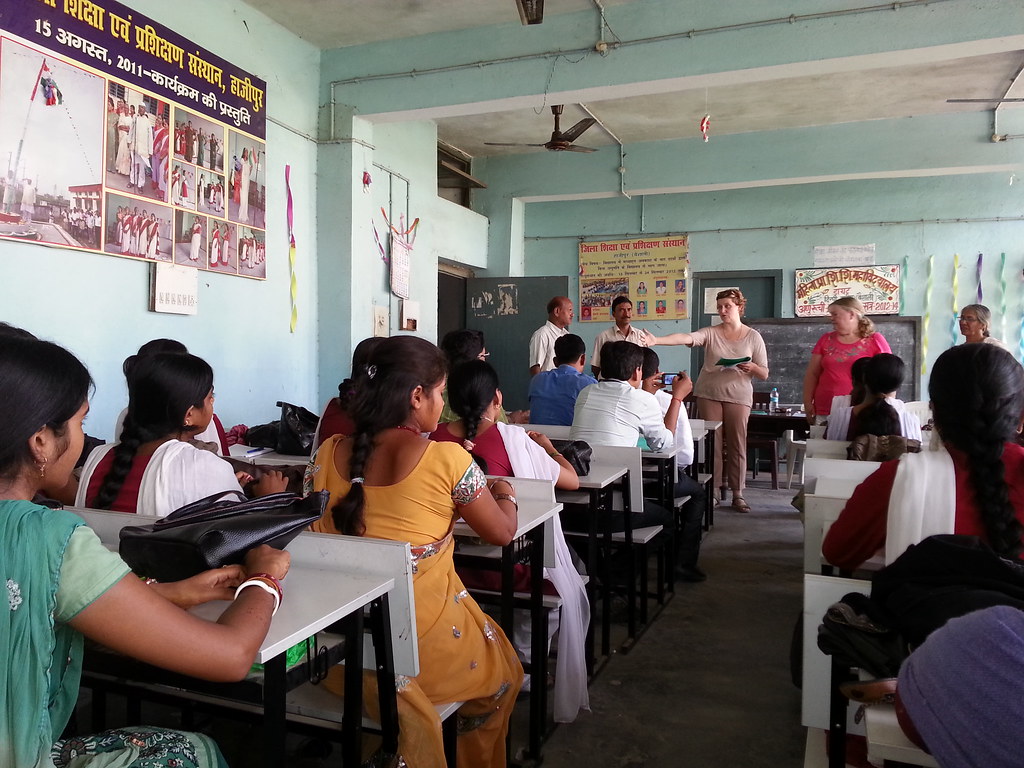
The higher education sector in India has seen a substantial increase in enrolment and rising equity over the past eight years, as revealed by the All India Survey on Higher Education (AISHE) 2021-22. The Economic Survey 2023-24, tabled in Parliament by Union Finance and Corporate Affairs Minister, Smt Nirmala Sitharaman, highlighted that total enrolment in higher education surged to nearly 4.33 crore in FY22, up from 4.14 crore in FY21 and 3.42 crore in FY15—a remarkable 26.5% increase since FY15.
This growth has been driven significantly by underprivileged sections, including SC, ST, and OBC communities, with a notable increase in female enrolment across these groups. Female enrolment in higher education jumped to 2.07 crore in FY22 from 1.57 crore in FY15, reflecting a 31.6% rise. This growing equity in higher education is expected to translate into better employment opportunities for previously disadvantaged sections of society.
India’s educational landscape is vast, with 26.52 crore students in schools, 4.33 crore in higher education, and over 11 crore learners in skilling institutions. The National Credit Framework (NCrF), announced under the National Education Policy 2020 in April 2023, serves as the foundation of a regulatory structure that promotes lifelong learning.
The Economic Survey underscores the importance of mission-mode and cost-effective implementation of educational programmes, especially at the primary level. Effective public spending on education should focus on pedagogy and governance, including monitoring teaching quality, recognising teacher performance, and employing local volunteers to ensure students are taught at the appropriate level.
India is making significant strides in research and development. The number of patents granted in FY24 nearly quadrupled from FY20, reaching almost 1,00,000. According to the World Intellectual Property Organization (WIPO), India had the highest growth in patent filings in 2022 at 31.6%. The country has improved its rank in the Global Innovation Index from 81st in 2015 to 40th in 2023.
Ph.D. enrolment has also surged, with an 81.2% increase from FY15 to FY22. Gross Expenditure on R&D (GERD) has more than doubled since FY11. The newly established National Research Foundation, ‘Anusandhan’, aims to bolster India’s R&D ecosystem with a significant financial commitment from the government.
India’s ascent in high-quality research is marked by its rise to 9th place in the Nature Index 2023, surpassing Australia and Switzerland. The government’s commitment to research and innovation is encapsulated in the interim budget of FY25, which includes a Rs. 1 lakh crore corpus for research, adopting the slogan “Jai Jawan, Jai Kisan, Jai Vigyan, Jai Anusandhan”.
Education
UNESCO Report Highlights Need for Boost in India’s Upper Secondary Education
Published
1 week agoon
July 18, 2024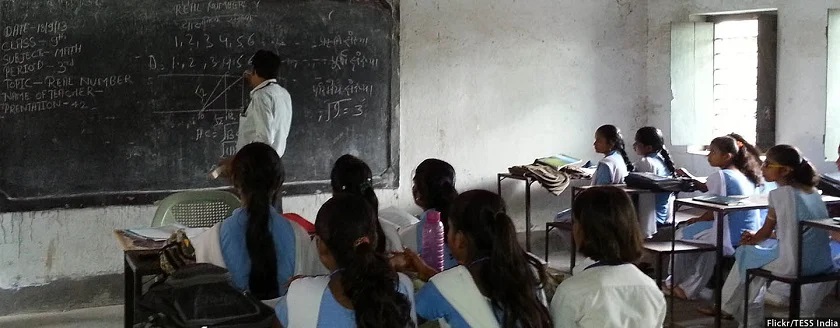
The recent UNESCO report, “SDG 4 Scorecard Progress Report on National Benchmarks: Focus on Teachers,” reveals that while India is excelling in primary education, the upper secondary education sector requires significant improvements. The report, published by UNESCO, shows that India’s primary education completion rate is at an impressive 94%, nearing its 2025 benchmark of 99%. However, the upper secondary completion rate lags at 51%, against the 2025 benchmark of 84%.
India’s performance in pre-primary participation is also notable, scoring 91%, close to its target of 95%. Conversely, the country struggles with out-of-school rates and lacks sufficient data to assess minimum learning proficiency accurately.
In terms of school internet connectivity, India is making average progress across all educational levels, indicating room for enhancement. The country performs well in the pre-primary teacher training sector, meeting its 2025 benchmark of 95%.
Overall, while India’s primary education sector is performing well, the secondary education sector, especially the upper secondary level, needs focused attention to meet the set benchmarks. The report highlights that 79% of countries have submitted national targets for SDG 4 indicators, with India making strides in some areas but still requiring significant efforts in others.
Education
Embracing Emojis in the Classroom: A Fun and Polite Approach to Modern Learning
Published
1 week agoon
July 18, 2024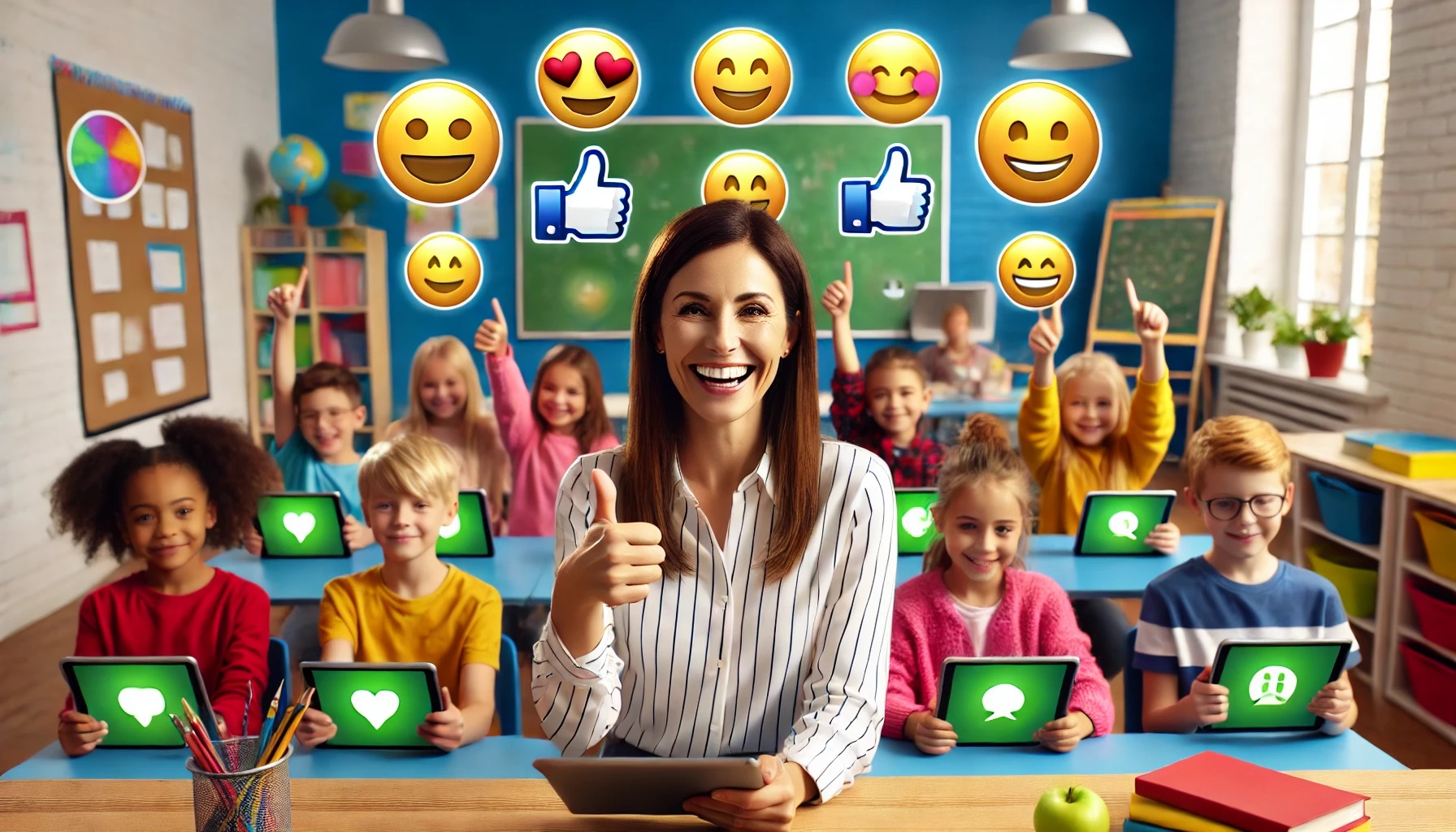
Today, on World Emoji Day, let’s celebrate these small, expressive icons that have become an integral part of our digital communication. While some argue that emojis threaten the sanctity of language, there’s a fun, quirky side to these tiny pictures that can actually enhance classroom interactions, making them more relevant, polite, and engaging.
Remember the thrill of getting a gold star on your homework? That star wasn’t just a sticker; it was a symbol of achievement, recognition, and encouragement. In many ways, emojis serve a similar purpose. They convey emotions and reactions succinctly and can add a personal touch to written communication. So, why not harness the power of emojis to make our classrooms more dynamic and student-friendly?
1. Enhancing Feedback: Traditionally, teachers use phrases like “good job” or “well done” to praise students. But imagine the added excitement if those words were accompanied by a clapping hands emoji 👏, a star ⭐, or even a trophy 🏆. Such visual cues can amplify the impact of positive feedback, making it more memorable and encouraging for students. Conversely, gentle reminders can be softened with a thoughtful emoji. For instance, a neutral face 😐 or a thinking face 🤔 could be used to indicate that a student might need to revisit a particular concept without causing undue stress or discouragement.
2. Encouraging Polite Communication: Emojis can also help maintain a polite and respectful tone in classroom discussions. For example, if a student disagrees with a peer, using a handshake emoji 🤝 or a smiling face 😊 can convey their differing opinion respectfully. This approach can foster a culture of kindness and consideration, crucial for productive and positive learning environments.
3. Making Learning Fun: Integrating emojis into lesson plans can make learning more interactive and enjoyable. Teachers can create emoji-based quizzes where students match emojis to historical events, literary characters, or scientific concepts. For example, an apple 🍎 and a book 📖 could be used in a quiz about famous inventors, prompting students to guess Isaac Newton. These activities not only make lessons more engaging but also encourage creative thinking.
4. Bridging Language Gaps: In classrooms with diverse linguistic backgrounds, emojis can serve as a universal language, helping bridge communication gaps. A thumbs-up 👍, a heart ❤️, or a smiling face 😀 can convey appreciation and support across different languages, fostering inclusivity and mutual understanding.
5. Digital Citizenship: As students increasingly navigate the digital world, teaching them about appropriate emoji use is crucial. Educators can incorporate lessons on digital etiquette, highlighting how emojis can enhance communication when used appropriately but can also be misinterpreted or cause misunderstandings if overused or used incorrectly.
6. Custom Emojis for Classroom Culture: Teachers can create custom emojis that reflect their unique classroom culture. For instance, a specific emoji could symbolize a class mascot, a special event, or a unique classroom achievement. This personal touch can strengthen the sense of community and belonging among students.
In conclusion, emojis are not a threat to language; rather, they are an evolution of it. They offer a unique and fun way to enrich classroom communication, making feedback more impactful, interactions more polite, and learning more enjoyable. So, on this World Emoji Day, let’s embrace these expressive icons and unlock their potential to make our classrooms brighter, kinder, and more engaging places to learn. 🌟🎉📚
Education
Workshop on Writing Textbooks in Bharatiya Bhasha for Higher Education Inaugurated by Dr. Sukanta Majumdar
Published
1 week agoon
July 17, 2024
The Minister of State for Education, Dr. Sukanta Majumdar has inaugurated a workshop for Vice Chancellors on the writing of textbooks in Bharatiya Bhasha for higher education in New Delhi. Organised by the University Grants Commission (UGC) and Bharatiya Bhasha Samiti (BBS), the event saw the presence of eminent academicians, including Shri K. Sanjay Murthy, Prof. Chamu Krishna Shastry, and Prof. M. Jagadesh Kumar.
Dr. Majumdar emphasized the importance of developing study materials in Indian languages to reflect the country’s linguistic diversity and ensure accessible education. He highlighted the National Education Policy (NEP) 2020’s role in inspiring youth and expressed gratitude to Prime Minister Narendra Modi and Education Minister Dharmendra Pradhan for their visionary leadership.
Prof. Chamu Krishna Shastry and Prof. M. Jagadesh Kumar shared insights on developing a Bharatiya Bhasha Ecosystem. During the valedictory session, Shri K. Sanjay Murthy launched three projects: ASMITA, Bahubhasha Shabdkosh, and Real-time Translation Architecture. These initiatives aim to produce 22,000 books in 22 scheduled languages, create a grand repository of multilingual dictionaries, and enhance real-time translation capabilities.
Over 150 Vice Chancellors participated in the workshop, organized into 12 groups to plan and develop textbooks in 12 regional languages. The discussions focused on creating new textbooks, establishing standard vocabularies, and improving current textbooks with an emphasis on Indian Knowledge Systems (IKS). The event concluded with a Q&A session addressing queries from participants.
Education
Nurturing Natural Skills: Empowering Youth for the Future
Published
2 weeks agoon
July 16, 2024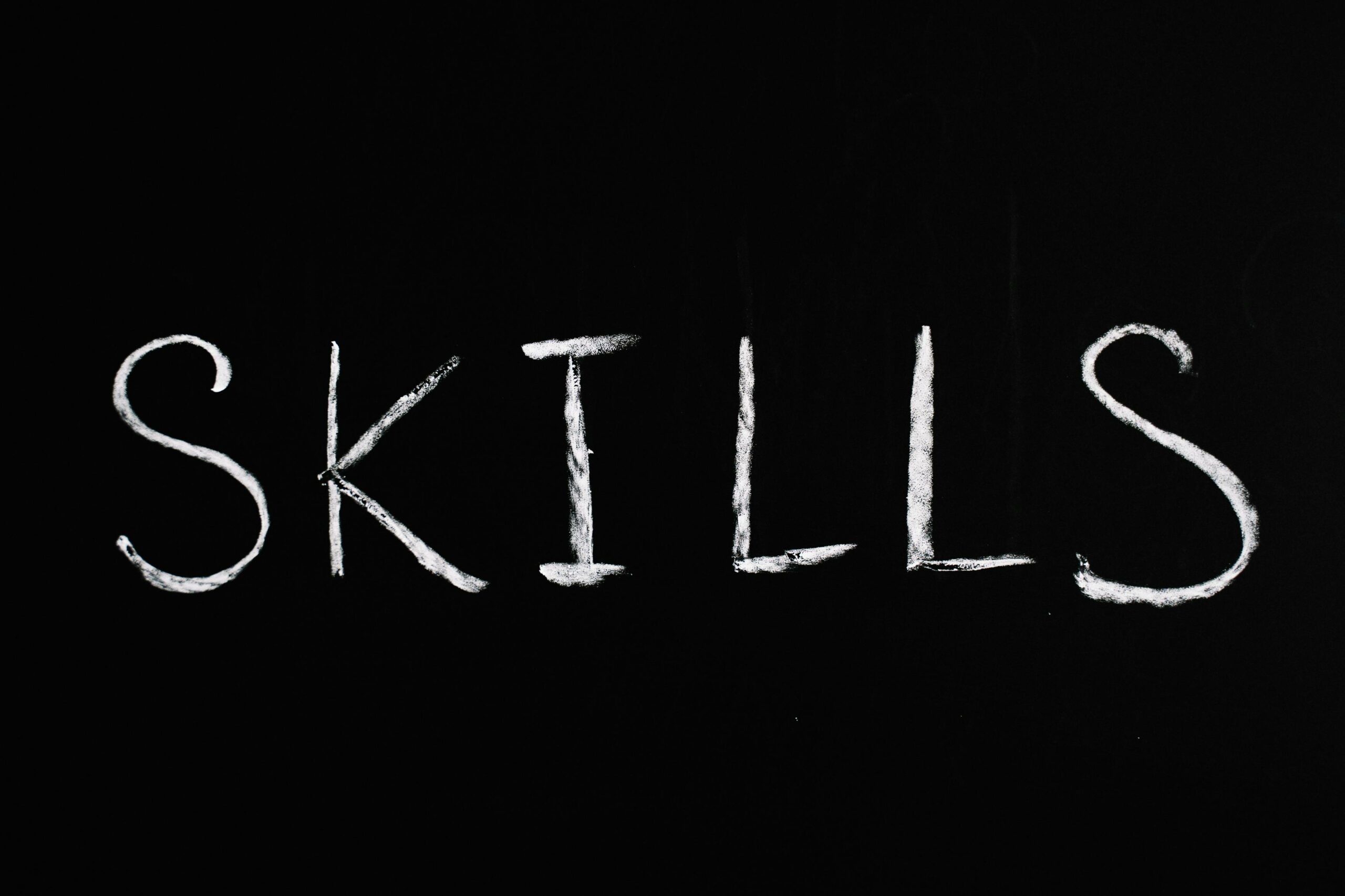
On World Youth Skills Day celebrated on 15 July globally, it’s essential to recognize the incredible potential children inherently possess. Children are naturally curious, energetic, and less afraid of taking risks—qualities that, if nurtured correctly, can form the bedrock of their future success. By identifying and developing these skills, we can empower them to become resilient and adaptable adults ready to face the challenges of the future.
Curiosity: The Catalyst for Learning
Curiosity drives children to explore, ask questions, and seek out new experiences. This innate desire to understand the world around them is a powerful tool for learning. Encouraging curiosity through inquiry-based learning and fostering an environment where questions are welcomed can significantly enhance their educational experience. For instance, project-based learning allows children to dive deep into subjects that interest them, promoting critical thinking and problem-solving skills.
Energy: Channeling Enthusiasm into Productivity
Children are bursting with energy, which, when directed correctly, can lead to incredible productivity and creativity. Schools and parents can harness this energy by providing varied activities that challenge both mind and body. Extracurricular activities like sports, music, and arts not only keep them engaged but also teach them discipline, teamwork, and perseverance. Moreover, incorporating movement into learning, such as through kinesthetic activities, can help maintain their focus and enhance memory retention.
Fearlessness: Embracing Risks and Learning from Failure
Children’s fearlessness and willingness to take risks are qualities that can drive innovation. Creating a safe environment where they can experiment, fail, and learn from their mistakes is crucial. By teaching resilience and the value of perseverance, we can help them develop a growth mindset. Activities that encourage trial and error, such as coding, robotics, and creative writing, can instill confidence and the ability to view failures as opportunities for growth.
Developing These Skills into Strengths
To turn these innate skills into lasting strengths, it is essential to provide continuous support and opportunities for development. Teachers and parents play a pivotal role in this process by:
- Providing Diverse Learning Experiences: Exposure to various subjects and activities helps children discover their interests and strengths. This broadens their horizons and fosters a love for lifelong learning.
- Encouraging Collaborative Learning: Group projects and team activities teach children the importance of collaboration, communication, and empathy. These skills are invaluable in both personal and professional settings.
- Promoting Self-Reflection: Encouraging children to reflect on their experiences helps them understand their strengths and areas for improvement. This practice can build self-awareness and intrinsic motivation.
- Integrating Technology: Leveraging technology in education can make learning more engaging and accessible. Interactive tools and resources can cater to different learning styles and keep children excited about their educational journey.
By recognizing and nurturing the natural skills of curiosity, energy, and fearlessness in children, we can transform these qualities into powerful strengths. This approach not only prepares them for future challenges but also equips them with the resilience and adaptability needed in a rapidly changing world. On World Youth Skills Day, let’s commit to fostering these attributes, ensuring that the youth of today become the innovative leaders of tomorrow.
Education
Celebrating Nikola Tesla: A Beacon for Transforming Education
Published
2 weeks agoon
July 10, 2024
Every year on July 10, people all over the world celebrate Nikola Tesla Day and think not only about the inventions of this great scientist but the core value of innovation and knowledge-seeking that Tesla embodies. His journey holds numerous lessons for modern education curriculum today.
Born on the tenth of July in the 1856 in Smiljan, Croatia, Nikola Tesla had an incredible curiosity from his early years. From a village boy to being among the most prominent inventors of all time, his story is an inspiring indication of the impact of creativity and hard work. Some of these include work done in alternating current systems, the invention of wireless communication, and early X-ray imaging to mention but a few. But what can we, as educators and stakeholders in the education sector, learn from the story of such an extraordinary person as Tesla?
Cultivating Curiosity and Imagination
Tesla’s success was driven by his boundless curiosity and vivid imagination. He often emphasized the importance of nurturing these traits, stating, “The gift of mental power comes from God, divine being, and if we concentrate our minds on that truth, we become in tune with this great power.” Encouraging students to question the world around them and imagine the possibilities beyond the obvious can foster a generation of innovative thinkers. Incorporating more open-ended projects and inquiry-based learning can help in this regard.
Embracing Failure as a Learning Tool
Tesla also had many failures and downfalls throughout his life, but he never let them stop him. He said “The present is theirs; the future, for which I really worked, is mine.” Such an attitude towards failure is something that every student needs to grasp as it is the key to success. The implementation of a curriculum that embraces the process rather than the product, and encourages learning, experimenting, and perceiving failure as a part of overcoming a challenge is effective.
Hands-On Learning and Experimentation
Tesla’s approach to learning was hands-on. He believed in experimenting and learning from practical experiences. Modern education systems can draw from this by integrating more laboratory work, maker spaces, and real-world problem-solving activities into the curriculum. Students should be encouraged to tinker, build, and experiment, thus applying theoretical knowledge to practical situations.
Tesla was involved in a variety of professions including electrical engineering, physics, and several others. This is evident in his method of integrating different fields of discipline to show the need for a balanced curriculum. The modern school curriculum should discourage compartmentalization of knowledge and encourage students to work across disciplines, with the ability to draw on different knowledge bases to create and solve multidisciplinary problems.
Learning as an Ongoing Process
Tesla never stopped learning. Being an inventive man, he was always learning and implementing new concepts and ventures till his last days. This shows that we need a philosophy of lifelong learning that is crucial in today’s ever-changing society. Challenge students to look at their education not as a quest that has an end goal, but a process that goes on for as long as one is alive. This can be supported by education through encouraging learners to pursue education on their own and offering them resources where they can continue learning beyond formal education.
Nikola Tesla is an inspiring example of the fact that it is possible to change the world by making education based on curiosity, perseverance, practice, and feedback. On the day dedicated to the great inventor Tesla, it is important to reflect on his life, work, and ideas, and, as educators, try to develop young people not only knowledge but dreams and ambitions that can change the world.
Education
Maharashtra Government Announces Free Higher Education for EWS, SEBC, OBC Girls
Published
3 weeks agoon
July 9, 2024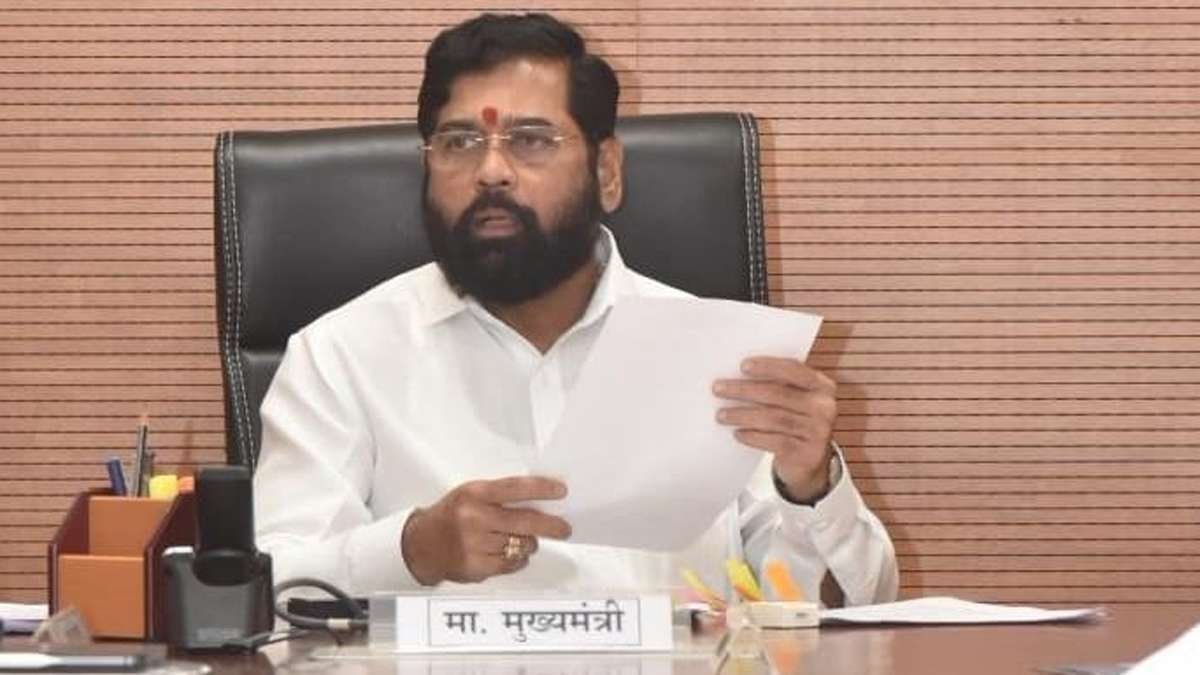
Ahead of the upcoming assembly elections in the state, the Maharashtra government has announced free higher education for girls from Economically Weaker Section (EWS), Socially and Economically Backward Classes (SEBC), and Other Backward Classes (OBC). The policy, which also waives tuition and examination fees for orphaned students regardless of gender, was formalised through a government resolution (GR) during a cabinet meeting chaired by Chief Minister Eknath Shinde. The initiative will commence from the academic year 2024-25 and is projected to cost Rs 906 crore.
The GR states that female students seeking admission to recognised vocational courses through the Centralised Admission Process in government colleges, aided private colleges, semi-aided private colleges, non-aided colleges, polytechnic, autonomous government universities, and open universities will benefit from this scheme. The courses covered include those run by the departments of higher and technical education, medicine, pharmacy, agriculture, animal husbandry, pisciculture, and dairy development. However, students from private autonomous universities, self-funded universities, or those enrolling through management and institutional quota will not be eligible for the scheme.
Female students whose annual family income is Rs 8 lakh or less and who belong to the EWS, SEBC, and OBC categories are eligible for the fee waiver. Both new admissions and current students pursuing their degrees can avail of this facility. This initiative is part of a broader women-focused policy by the Maharashtra government, aiming to enhance educational access and opportunities for underprivileged female students in the state.
(Source- PTI)
Education
Chhattisgarh Introduces Local Language Primary Education in Tribal Areas
Published
3 weeks agoon
July 8, 2024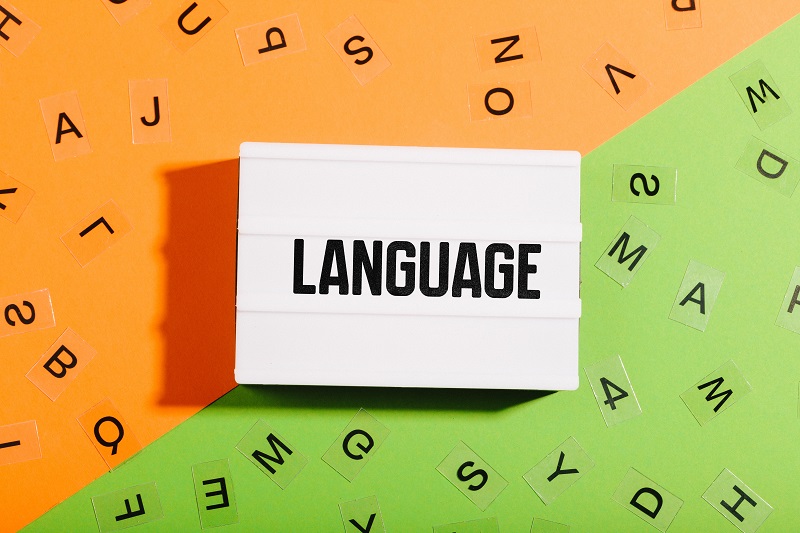
In line with the National Education Policy (NEP) 2020, the Chhattisgarh government has embarked on an initiative to provide primary education in local languages and dialects in remote tribal regions. Chief Minister Vishnu Deo Sai has directed the State Education Department to develop and distribute bilingual books in 18 local languages free of charge. This initiative aims to enhance the quality of educational resources and ensure that children receive education in their mother tongue or local language up to the fifth standard, as recommended by NEP 2020.
During the state-level ‘Shala Praveshotsav’ programme at Bagiya village in the tribal-dominated Jashpur district, Chief Minister Sai highlighted the importance of this initiative. He emphasised that providing education in local languages will not only improve educational outcomes but also help preserve local culture and traditions.
The ‘Shala Praveshotsav’ is an annual event aimed at encouraging school enrolment at the start of the academic session. This year, the event was moved from Raipur to Bagiya, the CM’s hometown, to underscore the significance of the new initiative.
An official from the Education Department mentioned that in tribal areas, primary school exams can now be taken in local languages and dialects. However, exams for higher classes will continue to be conducted in Hindi and English. This move is part of a broader effort to boost the literacy rate in Chhattisgarh, which currently stands at 70.28 percent, below the national average of 76 percent.
Newsletter

Remembering Kargil Vijay Diwas: A Lesson in History, Sacrifice, and Peace for Our Children

Youth Ideathon 2024: CBSE Launches India’s Biggest Entrepreneurship Competition for School Students

Internships in Top 500 Companies, Rs 5k Stipend for Youth: Key Highlights from the Education Budget 2024

Higher Education Enrollment Jumps To Nearly 4.33 Crore In FY22, Up 26.5% From FY15

UNESCO Report Highlights Need for Boost in India’s Upper Secondary Education

Embracing Emojis in the Classroom: A Fun and Polite Approach to Modern Learning

Workshop on Writing Textbooks in Bharatiya Bhasha for Higher Education Inaugurated by Dr. Sukanta Majumdar

Nurturing Natural Skills: Empowering Youth for the Future

Global Education Crisis Demands Immediate Action, Says UN Secretary-General

Celebrating Nikola Tesla: A Beacon for Transforming Education

Maharashtra Government Announces Free Higher Education for EWS, SEBC, OBC Girls

Chhattisgarh Introduces Local Language Primary Education in Tribal Areas

NCERT Introduces ‘Poorvi’ For Class 6: A New English Textbook With Indian Focus

National Teachers’ Award 2024: Self-Nominations Open Until 15th July

Australia’s Doubling of Student Visa Fees to Impact Indian Applicants

Navigating Teen Emotions: The Essential Lessons of ‘Inside Out’

Prerana Students Chart Career Paths with Target Publications’ Event

Kozhikode Becomes India’s First UNESCO ‘City of Literature’

Ladakh Celebrates Achieving Full Functional Literacy

Ministry of Education Launches Tobacco-Free Educational Institutions Campaign

A Story About Turning Math Anxiety into Achievement

Potato of my Classroom

The Liberal Gift: The Key Lessons from “College – Pathways of Possibilities” by Saikat Majumdar

NIIT Foundation and UNICEF YuWaah Empower 5,000 Women and Girls through Data Literacy Training Programme

Goa to Introduce Uniforms in Government Colleges

NCERT Introduces ‘Poorvi’ For Class 6: A New English Textbook With Indian Focus

India’s Eupheus Learning Recognised in TIME’s World’s Top EdTech Rising Stars of 2024

10 Summer Safety Tips for Kids During Summer Breaks

Why Sex Education in Schools is a Battlefield: A Look into Recent Debates and the Path Forward

OpenAI Launches ChatGPT Edu to Revolutionise University Education

Questioning the Trend of Lavish Farewells- #FarewellFiasco

UNESCO’s Happy Schools Initiative: Placing Happiness at the Heart of Education

Kerala Sets National Benchmark with AI Training Programme for 80,000 Teachers

NIIT Foundation and UNICEF YuWaah Empower 5,000 Women and Girls through Data Literacy Training Programme

Empowering Education: LASSI 2024 Concludes with Success and Inspiration

Addressing the Transition From Classrooms to Coaching: The Shifted Focus

One Size Doesn’t Fit All: The Need for Personalised Learning

Pricey Presents, Precocious Pressures: The Cost of Gift-Giving to Children

Heatwaves Disrupt School Education Across India

Beyond Appearances: Prachi Nigam’s Triumph and The Pressures of Appearance-Based Bullying in Schools

What It Takes to Be Well-Educated; Not Just Well-Read

Ivy Pressure Unveiled- The Need to Look Beyond the Ivy Gates

Vape Awareness: Mist of Misconception

The Liberal Gift: The Key Lessons from “College – Pathways of Possibilities” by Saikat Majumdar

University of Manchester To Offer Scholarships for Indian Students

Tripura Launches E-Attendance in Government Schools to Boost Accountability
CBSE Class 12 and Class 10 Results 2024: Girls Lead as Pass Rates Climb

Marked by Marks: The Stereotyping of Student Potential

Unsupervised Explorations: Rethinking Student Trips

Government of India Signs MoU for Digital Library Rashtriya e-Pustakalaya
SGEF2023 | Special Address by Rama Datt, Trustee, Maharaja Sawai Man Singh II Trust, Jaipur

ScooNews | After Movie | ScooNews Global Educators Fest 2023

Aftermovie | NIES2 UP Chapter | 21 Jan 2023

WEBINAR | Gamification in Education: How Digital Badges Can Boost Student Motivation and Engagement

ScooNews | WEBINAR| Importance of Physical Activity for Children at School | Plaeto

SCOONEWS | WEBINAR | WHY DIGITIZING YOUR SCHOOL IS A MUST | TEACHMINT

Keynote Address | Lakshyaraj Singh Mewar

Anurag Tripathi, Secretary, CBSE at SGEF2022

How schools can nurture every student’s genius

Aftermovie | SGEF2022 | Jaipur

Li Andersson | Minister of Education | Finland

Anurag Tripathi, Secretary, Central Board of Secondary Education (CBSE) discusses NEP2020

ScooNews | Early Ed Asia 2019 | Aftermovie
#PodarECEconf : Pursuing quality ECE

#CBSE Class XII #Results #Highlights

The interesting story of India’s educational system | Adhitya Iyer

A young scientist’s quest for clean water

The Danger of Silence: Clint Smith

National Digital Library of India is an initiative by HRD Ministry

Remembering Kalpana Chawla on her birthday!

Message from Sadhguru for Students!
Message from Sadhguru for Students!

The Untapped Genius That Could Change Science for the Better

Eddy Zhong: How school makes kids less intelligent TEDxYouth@Beacon

#TEDxCanberra : What if every child had access to music education…
Trending
-
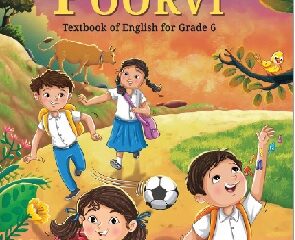
 Education3 weeks ago
Education3 weeks agoNCERT Introduces ‘Poorvi’ For Class 6: A New English Textbook With Indian Focus
-
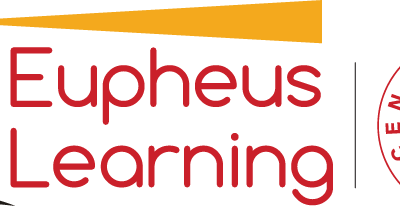
 Education3 months ago
Education3 months agoIndia’s Eupheus Learning Recognised in TIME’s World’s Top EdTech Rising Stars of 2024
-

 Education2 months ago
Education2 months ago10 Summer Safety Tips for Kids During Summer Breaks
-
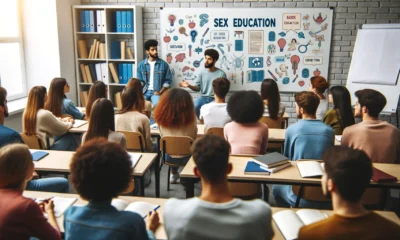
 Education2 months ago
Education2 months agoWhy Sex Education in Schools is a Battlefield: A Look into Recent Debates and the Path Forward
-
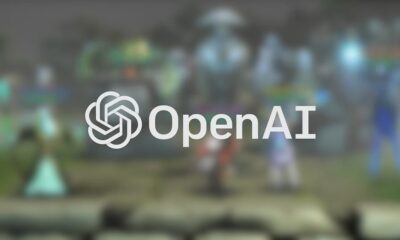
 Education2 months ago
Education2 months agoOpenAI Launches ChatGPT Edu to Revolutionise University Education
-

 Education3 months ago
Education3 months agoQuestioning the Trend of Lavish Farewells- #FarewellFiasco
-

 Education3 months ago
Education3 months agoUNESCO’s Happy Schools Initiative: Placing Happiness at the Heart of Education
-

 Education3 months ago
Education3 months agoKerala Sets National Benchmark with AI Training Programme for 80,000 Teachers
-
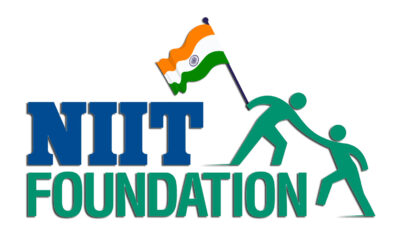
 Education1 month ago
Education1 month agoNIIT Foundation and UNICEF YuWaah Empower 5,000 Women and Girls through Data Literacy Training Programme
-
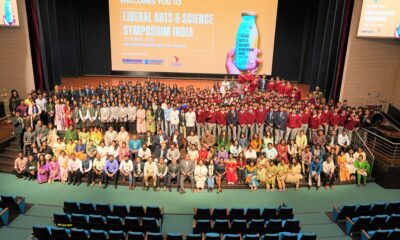
 Education3 months ago
Education3 months agoEmpowering Education: LASSI 2024 Concludes with Success and Inspiration



